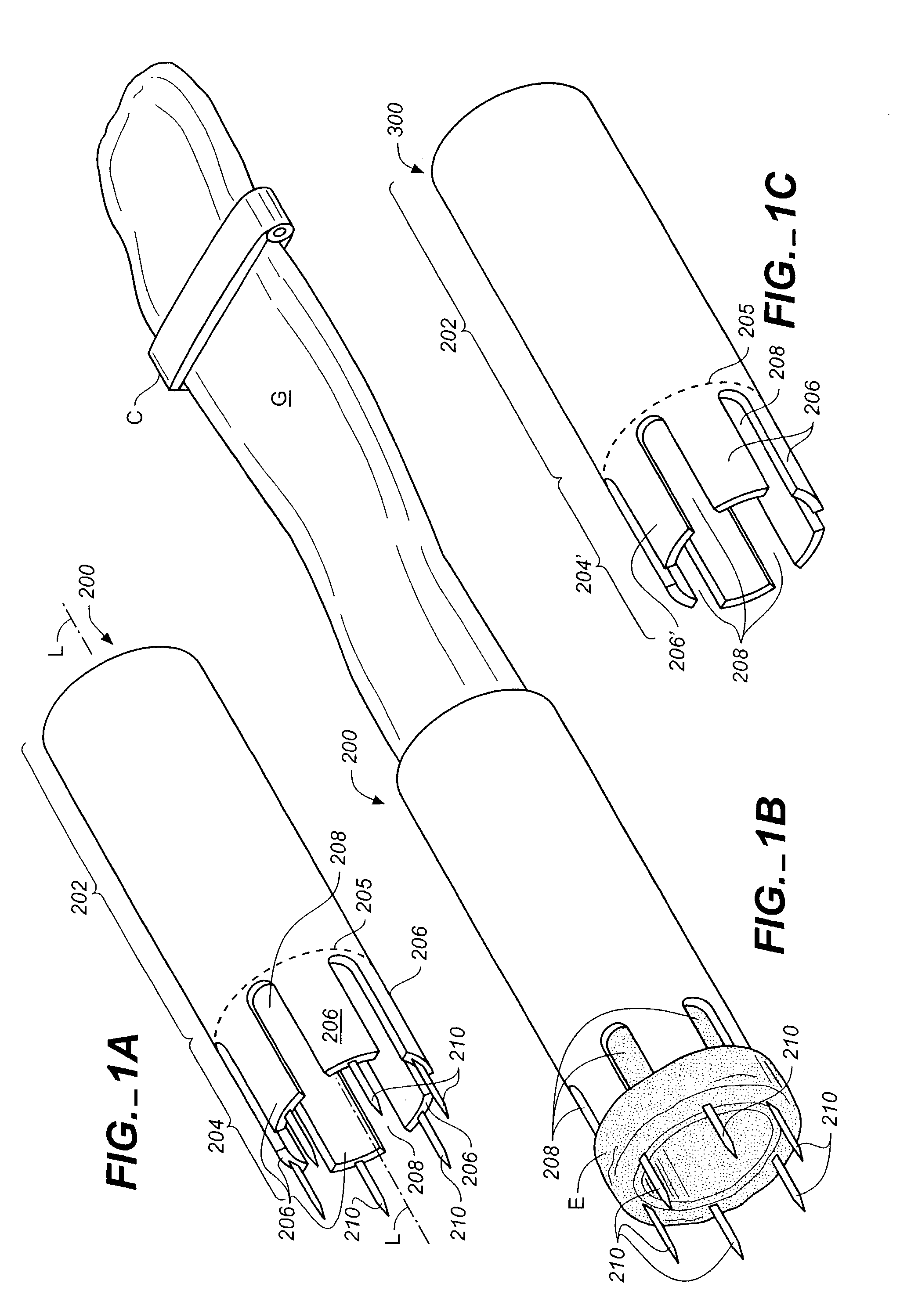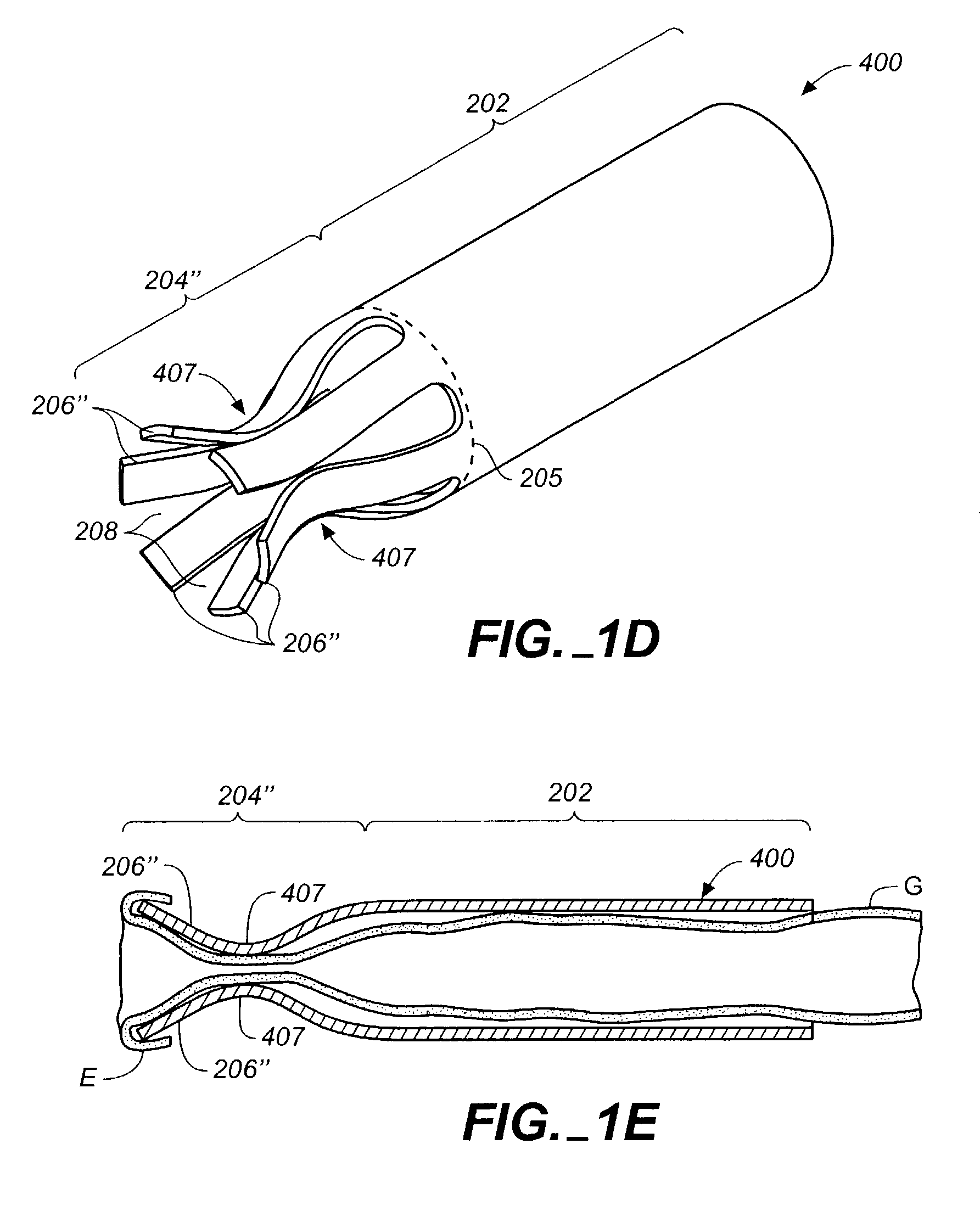Anastomosis apparatus and methods
a technology of anastomosis and apparatus, which is applied in the field of anastomosis apparatus and methods, can solve the problems of increased risk of artery trauma caused by ligatures at the clamped site, increased risk of angina and ischemia, and increased discomfort and risks of patients, so as to enhance or form a seal.
- Summary
- Abstract
- Description
- Claims
- Application Information
AI Technical Summary
Benefits of technology
Problems solved by technology
Method used
Image
Examples
Embodiment Construction
[0099]Before the present invention is described, it is to be understood that this invention is not limited to particular embodiments or examples described, as such may, of course, vary. Further, when referring to the drawings, like numerals indicate like elements.
[0100]The devices, systems, and methods described herein can be used to connect or anastomose tubular structures or conduits together. The tubular structures can be vascular or nonvascular structures. The illustrative embodiments will be described in connection with coronary artery bypass grafting procedures during which a vascular conduit or graft structure, such as a vein (e.g., a saphenous vein), artery (e.g., an internal mammary artery), or an artificial conduit or graft structure, is anastomosed to an aorta, the example target structure. It should be understood, however, that the invention can be used in other applications not specifically described herein. For example, the devices also can be used to anastomose intern...
PUM
 Login to View More
Login to View More Abstract
Description
Claims
Application Information
 Login to View More
Login to View More - R&D
- Intellectual Property
- Life Sciences
- Materials
- Tech Scout
- Unparalleled Data Quality
- Higher Quality Content
- 60% Fewer Hallucinations
Browse by: Latest US Patents, China's latest patents, Technical Efficacy Thesaurus, Application Domain, Technology Topic, Popular Technical Reports.
© 2025 PatSnap. All rights reserved.Legal|Privacy policy|Modern Slavery Act Transparency Statement|Sitemap|About US| Contact US: help@patsnap.com



